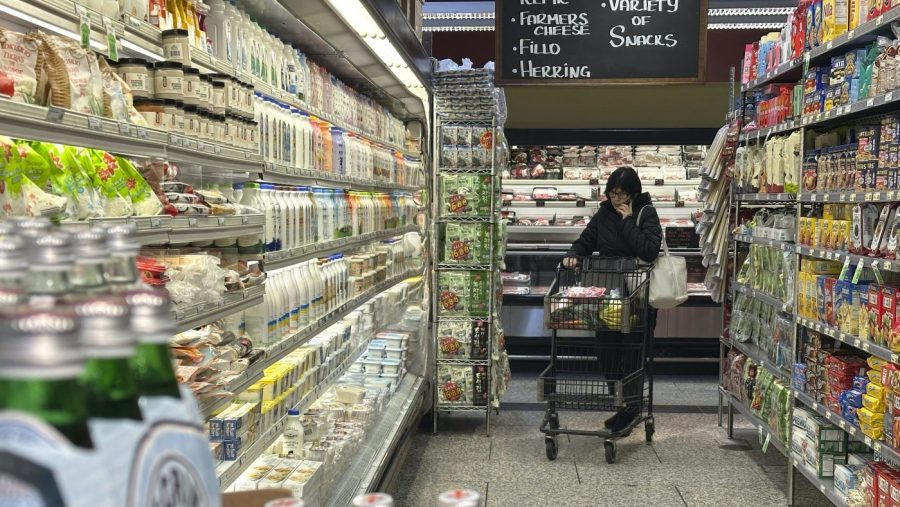5 things to know about the latest inflation report

Inflation moved up in June, due partially to businesses passing tariff costs onto consumers.
Despite the uptick, President Trump is on the warpath for the Federal Reserve to cut interest rates, a move that would stimulate markets and investment, but that could also push inflation higher.
As tariff-induced inflation threatens to become the dominant narrative on the economy, Trump and Fed chair Jerome Powell headed toward a collision. Treasury Secretary Scott Bessent said Tuesday that a “formal process” was underway to pick Powell’s successor.
Trump’s perceived strength on the economy was one of the primary reasons he was able to take back the White House. If inflation takes off as a result of Trump’s tariffs, the White House could lose control of the economic narrative, which could have a big impact on the midterm elections.
Here’s a deeper look at the June inflation report and what it means politically.
The report matches expectations
Economists’ expectations for June inflation ranged from a 2.6-percent to a 3-percent annual increase, so the 2.7-percent jump reported Tuesday by the Labor Department lines up pretty squarely with forecasts.
Inflation increased for the second month in a row, up from a 2.4-percent increase in May and a 2.3-percent increase in April.
Principal Asset Management strategist Seema Shah saw the number as “coming in softer than expected,” though many economists emphasized the fulfillment of predictions.
“The headline consumer price index (CPI) increased in line with expectations,” Raymond James chief economist Eugenio Aleman said in a note.
Taking out the more volatile categories of food and energy, the “core” CPI increased less than expected, rising to a 2.9-percent annual increase versus an expected 3 percent. That’s up from 2.8 percent last month.
Tariffs are likely contributing to the price rise
Economists have been warning for months that Trump’s import taxes would likely be passed onto consumers in the form of higher prices.
They pointed Tuesday to various categories in the CPI in which they saw this happening: fruits, home furnishings, recreation goods, appliances, video and audio products, and apparel.
“There is a trickle of what is likely tariff-induced inflation in some categories, particularly household appliances and furnishings,” Fitch Ratings U.S. economist Olu Sonola wrote in an analysis. “This trickle is likely to gain momentum in the coming months.”
Shah concurred.
“Import levies are slowly filtering through to core goods prices,” she wrote in a commentary.
Aleman saw tariff influence in the food sector.
“Fruits and vegetables and nonalcoholic beverages prices had strong increases during the month, which could be pointing to tariffs,” he wrote.
It’s not all tariffs
The CPI is a wide-ranging sample of prices for goods and services in the economy, and substantial segments of it are not directly affected by tariff rates.
Shelter was the “primary driver” of inflation in June, according to the Labor Department, and while imported raw materials can factor into construction costs, shelter costs are more directly sensitive to other factors, such as short-term interest rates set by the Federal Reserve.
Admittedly, the Fed has been keeping interest rates elevated in anticipation of tariff inflation, but that’s not a case of tariffs being passed directly onto consumers.
Car prices deflated in June, dropping by 0.3 percent, after being the target of significant tariffs. Both new and used vehicle prices were down. Car companies executed a huge pull-forward in orders from abroad ahead of tariffs, so dealers may be marking down prices to clear inventories.
Excluding vehicles, durable goods saw broad increases in June, jumping 0.8 percent and rising by an annualized 5.8 percent in the last three months.
“[It’s] the fastest rate since 2022,” Preston Caldwell, chief U.S. economist at Morningstar, wrote in an analysis.
“We’ve seen substantial price increases for appliances, other household goods, and some electronics.”
Why did tariffs take so long to show up in prices?
Trump’s trade war started almost as soon as he took office, with the bulk of his novel “reciprocal” tariffs announced in early April. This begs the question of why they took so long to show up in the CPI.
One reason is the stockpiling of inventories. Both consumers and businesses stocked up before the tariffs were announced.
Households went on a shopping spree — notably for autos — in the first quarter, and importers pulled orders forward in a move that took a bite out of first-quarter gross domestic product.
Trump has also delayed the implementation of many of his announced tariffs, as they have functioned initially as stances for negotiations. He paused his “reciprocal” tariffs for 90 days in early April and then pushed them back again this month to Aug. 1.
Additionally, many of Trump’s tariffs apply to component parts rather than finished consumer goods. The extra cost of tariffs takes time to move through a value chain as a final good is assembled.
“A majority of U.S. imports are not consumer goods. They are inputs that US manufacturers use, such as raw materials and machinery components,” Ryan Young, senior economist with the Competitive Enterprise Institute, wrote in a commentary. “These price increases take time to work their way through supply chains down to consumer goods.”
Political blowback and the economic narrative
Trump on Tuesday blasted the Fed, again, for not cutting interest rates.
“Consumer prices low. Bring down the Fed rate, now!” the president wrote.
He said the Fed should cut interest rates by a full 3 percentage points, which would probably be the largest single cut ever made.
Monetary policy is a fundamental disagreement now between the Fed and the White House, as Powell has said the central bank is specifically not cutting rates due to Trump’s tariff policies.
Moves are underway in the executive to get rid of Powell and find his successor, which could seriously undermine the longstanding independence of the U.S. central bank.
Bessent said Tuesday that a “formal process” was underway to find Powell’s replacement. Powell’s term expires next year.